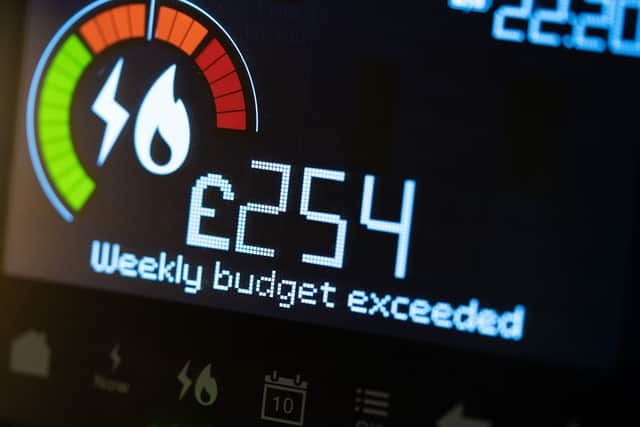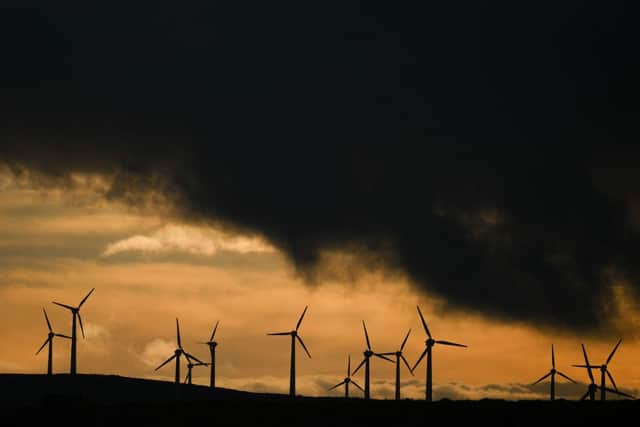When can I get paid for saving energy today? What time does National Grid’s Demand Flexibility Service start
and live on Freeview channel 276
Hundreds of thousands of households across the UK were paid to reduce their energy consumption on Monday (23 January), with the scheme now set to kick in once again on Tuesday (24 January).
The Demand Flexibility Service, a national electricity usage reduction scheme run by Great Britain’s electricity network operator National Grid ESO, kicked in as the UK’s energy reserves were deemed to be too low. Some of the people taking part reportedly went on bike rides to take advantage of the scheme.
Advertisement
Hide AdAdvertisement
Hide AdIt comes as the UK battles tight energy supplies - although the risk of blackouts is believed to have reduced. Deteriorating relations between Europe and Russia since the country invaded Ukraine in February 2022 have forced most European countries to turn to a smaller pool of energy supplies.
With southern England and parts of Wales currently facing freezing temperatures, demand has soared. At the same time, energy produced by renewables has declined.
So, when could you be paid to cut your electricity usage today - and how does the scheme work?


What is the Demand Flexibility Service?
National Grid ESO’s Demand Flexibility Service is a scheme that incentivises people to cut their electricity consumption when energy supplies across England, Wales and Scotland are deemed to be tight. It basically pays people and businesses not to use power at peak times of the day - typically from 5pm onwards - so that energy usage is more evenly spread throughout the day, and therefore more predictable for the National Grid.
Advertisement
Hide AdAdvertisement
Hide AdBy reducing energy demand, the operator has greater flexibility to ensure Britain has enough energy supply to power itself when demand threatens to outstrip supply. In the past, it relied upon power stations being able to up their output to avoid any shortfalls, but the country’s increasing reliance on renewable energy - an energy source that cannot be controlled - and a global shortage of gas has prompted the power network to launch the Demand Flexibility Service.
How much you stand to save depends on how much power you typically use at the allotted time, as well as who you get your energy from. For example, Octopus Energy customers can access higher payouts of around £3.37 per unit of electricity saved compared to the £1.60 to £1.70 most other suppliers are offering. It all depends on the contracts your provider has negotiated with National Grid ESO.
First launched in November 2022, it had only been tested by a small number of households prior to Monday’s first ‘live’ run. But now, up to a million households can take part.
How can you sign up to National Grid scheme?
Whether or not you can sign up to the demand Flexibility Service depends on who your energy supplier is. You must also have a smart meter installed in your property.
Advertisement
Hide AdAdvertisement
Hide AdThere are 26 suppliers taking part at present, but some are only running the scheme for business customers. The largest suppliers involved include:
- British Gas
- E.on Next
- OVO Energy
- Shell Energy
- EDF
- Octopus Energy
Each supplier is likely to run the scheme in a slightly different way, so you will have to check with your provider to see if you’re eligible to take part. Most energy firms offer the chance to sign up through their website.
Some may require you to apply to sign up well in advance of Demand Flexibility Service operation dates. Others will allow you to register right up until the scheme starts Once you register with your provider, you will have to opt in every time the scheme runs. Most suppliers will inform you when to do so via text or email.
When is Demand Flexibility Service running today?
After running for an hour on Monday between 5pm and 6pm, the Demand Flexibility Service is set to kick in again on Tuesday (24 January).
Advertisement
Hide AdAdvertisement
Hide AdThe National Grid ESO says it will run for a 90-minute period between 4.30pm and 6pm. It comes ahead of predictions of another overnight cold snap for households in the south of England.
The Met Office has predicted temperatures could drop to -4℃ in the early hours of Wednesday morning (25 January). But the UK is set for much milder conditions as the week progresses, meaning it is unlikely the Demand Flexibility Service will be called upon again in the short term.
Explaining its decision to run the scheme again on Tuesday, National Grid ESO said: “The use of these additional services is not an indication that electricity supplies are at risk, but that we require greater options to manage the network as normal.”
It comes after the UK’s energy systems operator called on three coal power stations to fire up over the weekend in case the country ran short of energy. Thus far, they have not been used to supply energy to the grid, with National Grid ESO head of control Craig Dyke telling Sky News they were “just for contingency”.
How can you save money through National Grid scheme?
Advertisement
Hide AdAdvertisement
Hide AdYou are only likely to make big savings through the Demand Flexibility Service if you tend to use a lot of energy during the times it runs for. So, say you usually cook your evening meal between 5pm and 6pm and the scheme runs for that hour, you could be paid more for holding off than if you usually do it after 6pm.
To work out how much you could save, you will need to know how many units of energy your electric appliances burn through. For example, a typical electric oven will use two units per hour, so you could save more than £6.50 if you usually have it on for an hour.


While turning everything off will help your cause, you will not necessarily save that much money. Electric fittings like light bulbs tend to use only a small amount of energy, which means it will take a long time for them to generate any savings.
To work out how much energy an appliance or other electrical item uses, you must first find out what its wattage is. To convert it into kWh (kiloWatt hours - i.e. one unit of electricity), divide the wattage by 1,000.
Comment Guidelines
National World encourages reader discussion on our stories. User feedback, insights and back-and-forth exchanges add a rich layer of context to reporting. Please review our Community Guidelines before commenting.
